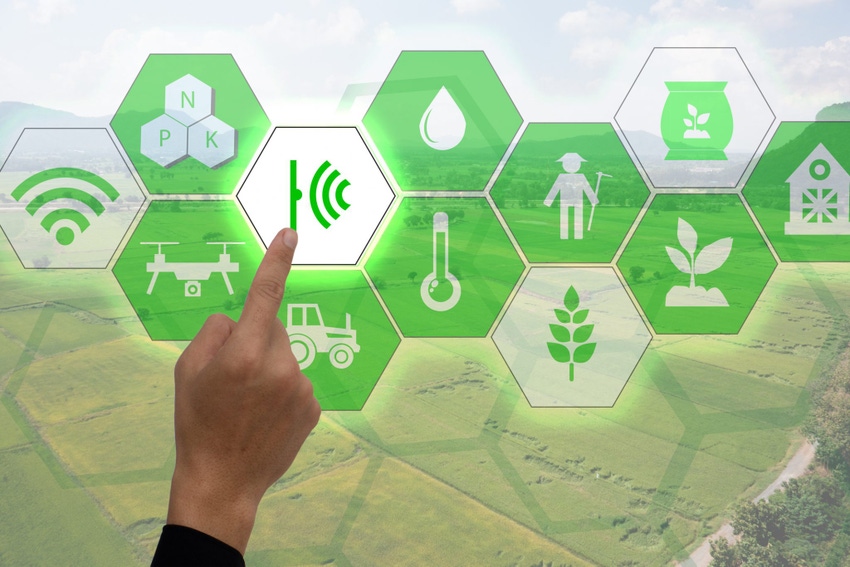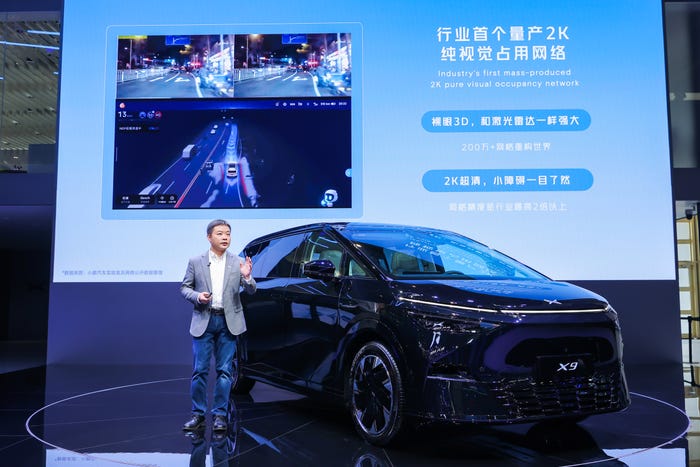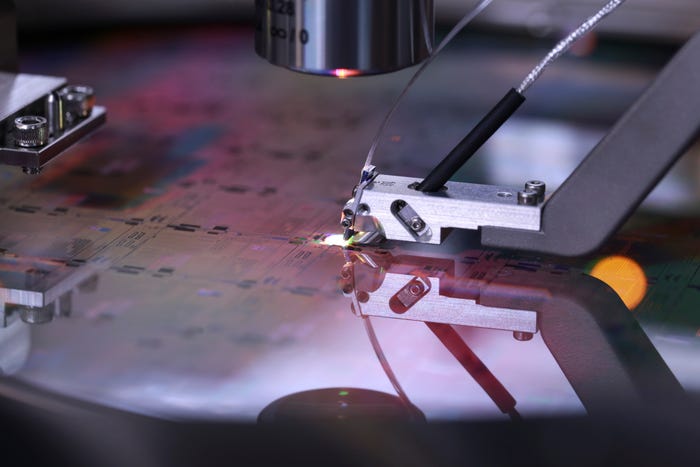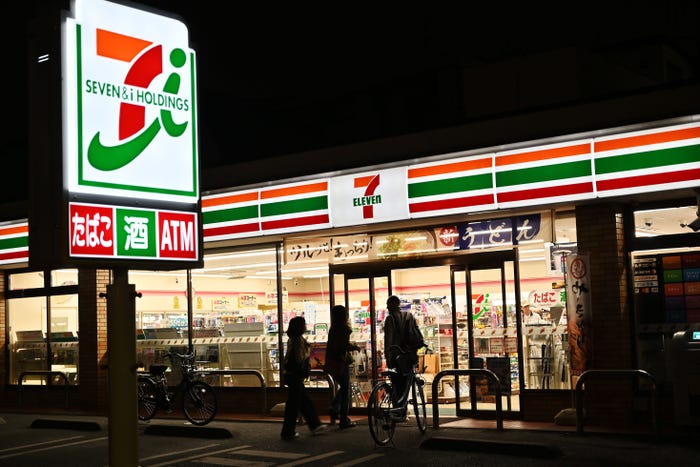Connected Farming Harvests Data and Gives Agriculture a Jolt
Connected farming helps farmers optimize crops, reduce downtime and promote sustainable agriculture. Are they ready?
February 18, 2020

Despite technological advances in the field, agriculture largely depends on human input.
Farmers still tend to their land, harvesting crops and preparing fields for the next season.
But these age-old activities have taken on an entirely new cast with the Internet of Things collecting data alongside farmers in the field. With IoT in agriculture, farmers can reduce waste and bolster productivity. Armed with data and automation, farmers are better able to nurture, harvest and replenish their crop.

Deanna Kovar, John Deere
“Farmers have to get more productive to be profitable,” said Deanna Kovar, director of the Global Operator Station team in John Deere’s Intelligent Solutions Group.” The data from an IoT system can aid them in finding those areas where they can reduce cost and reduce risk.” [Kovar is a finalist for the Internet of Things World 2020 Leader of the Year award, which recognizes individual executives whose outstanding leadership has resulted in the success of IoT in their businesses and beyond.]
According to the American Farm Bureau, “precision technology” — including connected sensors and algorithms designed to optimize operations can reduce costs by some 15% and increase crop yield by 13%.
[IoT World is North America’s largest IoT event where strategists, technologists and implementers connect, putting IoT, AI, 5G and edge into action across industry verticals. Book your ticket now.]
Over the past decade, connected farming has become an industry mainstay. By some estimates, 10% to 15% of farmers use IoT technologies on the farm, according to data from Alpha Brown.
A BI Intelligence survey expects that the adoption of IoT devices in the agriculture industry will reach 75 million in 2020, growing 20% annually. At the same time, the global smart agriculture market size is expected to triple by 2025, reaching $15.3 billion (compared to being slightly over $5 billion back in 2016).
That’s been critical in recent years as margins have gotten tight.
Net cash farm income is forecast to decrease $10.9 billion (9.0%) to $109.6 billion in 2020, relative to the 2019 forecast. “The cost of growing that crop hasn’t changed. They have to get more productive with their time, reduce cost and reduce risk to sustain operations,” Kovar said
At the same time, demand is increasing.
The United Nations projects that the world’s population will reach 9.7 billion by 2050, causing global agricultural production to rise 69% between 2010 and 2050. To meet this demand, farmers and agricultural companies are turning to the Internet of Things for its power to drive analytics and boost production.
Taming the Variability of Agriculture with Connected Farming
Farmers need greater insight into daily vagaries, such as weather, soil needs and the possibility to predict equipment breakdown, Kovar said. With IoT sensors on tractors and planters, farmers command far greater predictive control of risks to crops.
“There is tons of variability in the land, from season to season,” she emphasized. “By connecting every machine, we’re helping [farmers] to drive as much consistency as they can,” she said.
So, for example, IoT sensors can identify equipment failures before they happen. Farmers can avoid downtime from a tractor in repair and a field lying fallow without equipment to tend it.
“In 2019 alone, the John Deere Operations Center, an IoT platform, sent 27,000 expert alerts. Sent to John Deere dealers, these alerts indicate, “Your customer is about to have a downtime failure.” In turn, dealers can position themselves as trusted advisers, armed with data and equipment expertise to help customers before costly downtime happens.
Kovar said IoT provided an opportunity for farmers to see their environment anew. “Farmers are seeing data in a new way: They might stop farming a certain field. They might lower the rate at which they plant seed to avoid wasting seed, they are changing irrigation practices, how they apply nutrients. They are making thousands of decisions, and the data is helping them change every one of those decisions.”
And this decision-altering data can save dollars.
According to one IoT solutions provider, connected sensors could reduce water consumption by 30% while improving land management decisions.
At the same, farmers are skeptical of having big business house their data. They have been proponents of controlling the data that passes through their equipment, according to the American Farm Bureau. According to a survey, many farmers advocated a “cooperative-style central repository for their data” to standardize security controls and contextualize that data.
More software in equipment can also add complexity to operating, and repairing, equipment. Farmers should also be able to fix their own equipment rather than be at the behest of providers simply because the gear is connected.
Optimizing and Automating Crop Cycles with IoT
IoT can also bring greater efficiency and quality control to farming. In the autumn, after harvest, farmers need data on soil condition so they can replenish fields.
IoT sensors on planters now provide data on which nutrients a field needs in real time.
Kovar said having that data in real time, rather than weeks later, allows farmers to get ahead of weather issues and other potential disruptions in replenishing soil.
IoT sensors also enable machines to communicate with one another and avoid duplication of work. “Because these machines are connected, they can share data,” Kovar said. “One machine can control what another is doing, to maximize what farmers are doing in the field with as few inputs as possible.” Known as “coverage map sharing,” planters can communicate when they have seeded a row of a field so another planter doesn’t replicate the work and overplant.
Optimizing collection allows farmers to “speed up decisions — decisions not on what they think happened, but what they know happened,” she said.
In the future, Kovar said, John Deere also plans to perfect its computer vision technology to identify good crops from weeds. As a result, farmers can target herbicide to weeds rather than blanket an entire field. John Deere estimates that computer vision will save farmers 80% in herbicide cost — and promote agricultural sustainability.
“Computer vision will take us to a whole new level plus the machine learning algorithms. We can identify the weed and spray only the weed,” Kovar said.
Kovar said that farmers are eager to use technology to improve farming yields and to promote sustainability. Farmers are “looking for the next thing they can automate,” she said. “They get one chance a year to maximize their output and minimize their input.” Kovar believes that technologies like IoT and AI will continue to help them maximize that one chance.
[Kovar is a speaker at this year’s Internet of Things World 2020. Check out here session on connected farming here. To register for IoT World, book your ticket now.]
About the Author(s)
You May Also Like



.png?width=300&auto=webp&quality=80&disable=upscale)
.png?width=300&auto=webp&quality=80&disable=upscale)
.png?width=300&auto=webp&quality=80&disable=upscale)
.png?width=300&auto=webp&quality=80&disable=upscale)